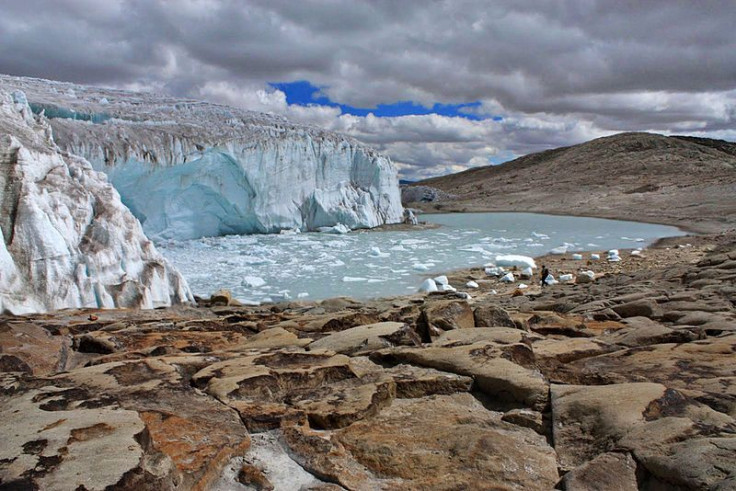Melting Of Peru’s Quelccaya Ice Cap Caused By Rising Temperature, Not Reduced Snowfall: Study

The dramatic shrinkage of Peru's Quelccaya Ice Cap -- the world’s largest tropical ice sheet -- in recent decades is caused by rising temperatures and not because of reduced snowfall in the region, a new study by Dartmouth College in Hanover, N.H., has concluded.
The rapidly melting Quelccaya Ice Cap, which sits 18,000 feet above sea level in the Peruvian Andes, has become a symbol for global climate change, and the new study, published Tuesday in the journal Geology, supports a previous theory that tropical glaciers are rapidly shrinking because of a warming planet. The researchers believe that the findings will help scientists better understand the natural variability of past and modern climates, and improve models to predict tropical glaciers’ response to future climate change.
“This is an important result since there has been debate about the causes of recent tropical glacial recession – for example, whether it is due to temperature, precipitation, humidity, solar irradiance or other factors,” Meredith Kelly, a glacial geomorphologist at Dartmouth and the study’s co-author, said in a statement.
Kelly and her team of researchers used field mapping combined with a surface-exposure dating method called beryllium-10 and ice cores obtained by Lonnie Thompson, a paleoclimatologist at the Ohio State University, to examine how the Quelccaya Ice Cap has expanded and retreated over the past 1,000 years.
The researchers used elaborate techniques to date the expansion and retreat of Qori Kalis, a major outlet glacier from the Quelccaya Ice Cap, over the past 500 years. During the last millennium, a major cooling event known as the Little Ice Age occurred, but scientists don't know what caused the cooling.
The Qori Kalis grew to its maximum position prior to 520 years ago and subsequently retreated with only minor re-advances since that time, and according to Justin Stroup, the Dartmouth study’s lead author, the glacier was more sensitive to temperature, while other factors such as the amount of snowfall, were secondary causes of the glacier’s expansion and retreat. The study suggests that melting of other glaciers in tropical South America is similar to what's happening on the Qori Kalis.
However, the study's broader conclusion that rising temperature is the controlling factor for the glacier needs more supporting evidence according to some scientists.
According to Douglas R. Hardy of the University of Massachusetts in Amherst, Mass., the study's conclusion is based on a record of ice accumulation over centuries, and because the ice has been compressed over time, the evidence in the study requires substantial interpretation.
“I actually believe that finding is probably accurate, but I don’t see that they make a compelling case for that with this study,” Hardy told The New York Times.
© Copyright IBTimes 2024. All rights reserved.






















